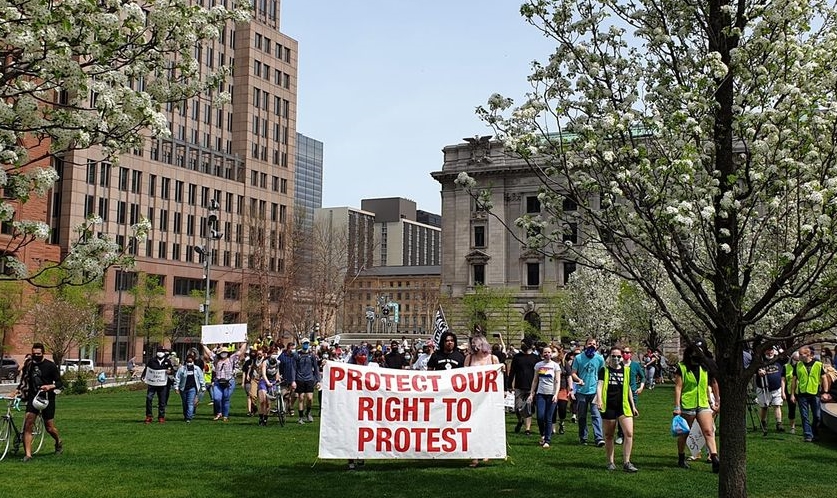Alison Grant

A bill heightening penalties for protests near oil and gas pipelines appeared in February 2019 in the Ohio Senate Judiciary Committee. Observers quickly understood SB33 as an attempt to stifle protests aimed at the fossil fuel industry – in particular the fracking operations spreading rapidly across eastern and southeastern regions of the state. As it moved through committees, the bill generated 220 opponent witness statements versus 14 proponent statements. The bill was passed by the GOP-controlled Senate and House and signed into law by Gov. DeWine on Jan. 11, 2021.
If SB 33 opponents thought that unfortunate development laid to rest attempts in Ohio to curb and chill demonstrations and political expression, the following year would prove them wrong.
Today there are four bills pending at the Ohio Statehouse aimed at street and infrastructure protests, according to the protest law tracker of the International Center for Not-for-Profit Law. https://www.icnl.org/usprotestlawtracker/
The summaries below are drawn from the center’s database.
HB 109 makes the penalty for blocking traffic a third degree felony if such “disorderly conduct” occurs during a “riot.” It creates new felonies such as riot assault and riot vandalism. It also expands Ohio’s corrupt activity laws to expose individuals and organizations involved in organizing or funding protests to potential felonies and civil liabilities — a maximum of eight years in prison and $15,000 fine — if events turn violent. The bill passed the House Feb. 16 on a party-line vote, 59-35, and headed to the Senate.
HB22 criminalizes “failure to follow a lawful order from a law enforcement officer or diverting a law enforcement officer’s attention.” Sponsors removed a section that would have penalized “taunting” of an officer. The Columbus Dispatch reported that Ohio State Highway Patrol Superintendent Richard Fambro said the bill would create a “protective halo” around an officer. Opponents say the bill’s language is highly subjective and an invitation to infringement of free speech and assembly. The House passed the bill in June 2021 and it moved to the Senate Judiciary Committee.
SB41 charges protestors for the cost of property damage and the cost for law enforcement to respond to a “potential serious threat to public safety,” defined to include a report that two or more people are committing vandalism, “criminal mischief” or “aggravated riot.” The bill makes intentionally defacing, painting or otherwise marking on government property a felony punishable by up to a year in prison. Another provision makes planning or aiding in planning vandalism of government property a new conspiracy offense punishable by up to six months in jail and a $1,000 fine. The bill was introduced in February 2021 and referred to the Senate Judiciary Committee.
SB16 creates new penalties for protests that take place or spill onto streets, sidewalks or any other “public passage.” The bill provides that it is a first-degree misdemeanor, punishable by up to six months in jail and a $1,000 fine, to “impede” or render any public passage “impassable without unreasonable inconvenience” after being asked by an authority to stop. If the offense occurs as part of a “riot,” it is a fifth-degree felony punishable by a year in prison and $2,500 fine. A riot in Ohio is four or more people engaging in disorderly conduct. So, as an example, if four or more people, as an act of civil disobedience, block an entrance into city hall, they could receive a year in prison and $2,500 fine. The bill passed the Senate in June 2021 and was referred to the House Criminal Justice Committee.

You must be logged in to post a comment.